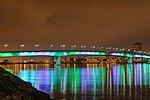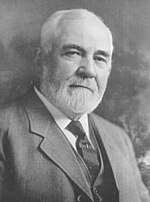Fellows & Stewart

Fellows & Stewart Inc. was a shipbuilding company in San Pedro, California on Terminal Island's Pier 206. To support the World War II demand for ships Fellows & Stewart built Crash rescue boats and submarine chasers. The Crash rescue boats were operated by both the US Navy and US Army during the war. Some crash rescue boat also served in the Korean War. Fellows & Stewart was founded as Joe Fellows Boat Shop in 1896. Joe Fellows was an English immigrant who learned boat building in Seattle and San Francisco. The company changed to Fellows & Stewart as the shipyard manager, Victor Stewart joined in as a partner. Many of the boats were designed by Joseph Pugh. From 1907 to 1917 called the Joe Fellows Yacht and Launch Company. In the 1910s, 1920s and 1930s the shipyard built many yachts and sailboats. The name changed to the Fellows & Stewart Inc. in 1917. In 1967 the shipyard was sold to Harbor Boatbuilding. The shipyard is sometimes listed as being in Wilmington. The records of Fellows & Stewart are housed at the Los Angeles Maritime Museum. Notable boats and ships: HMAS Air View, USS SC-1012, Rudolph Valentino's 1926 yacht Charade (Phoenix) and the Ranger built in 1917 active at the Santa Barbara Maritime Museum.
Excerpt from the Wikipedia article Fellows & Stewart (License: CC BY-SA 3.0, Authors, Images).Fellows & Stewart
Pier F Avenue, Long Beach
Geographical coordinates (GPS) Address Nearby Places Show on map
Geographical coordinates (GPS)
| Latitude | Longitude |
|---|---|
| N 33.746226 ° | E -118.215373 ° |
Address
Pier F Avenue
90802 Long Beach
California, United States
Open on Google Maps








